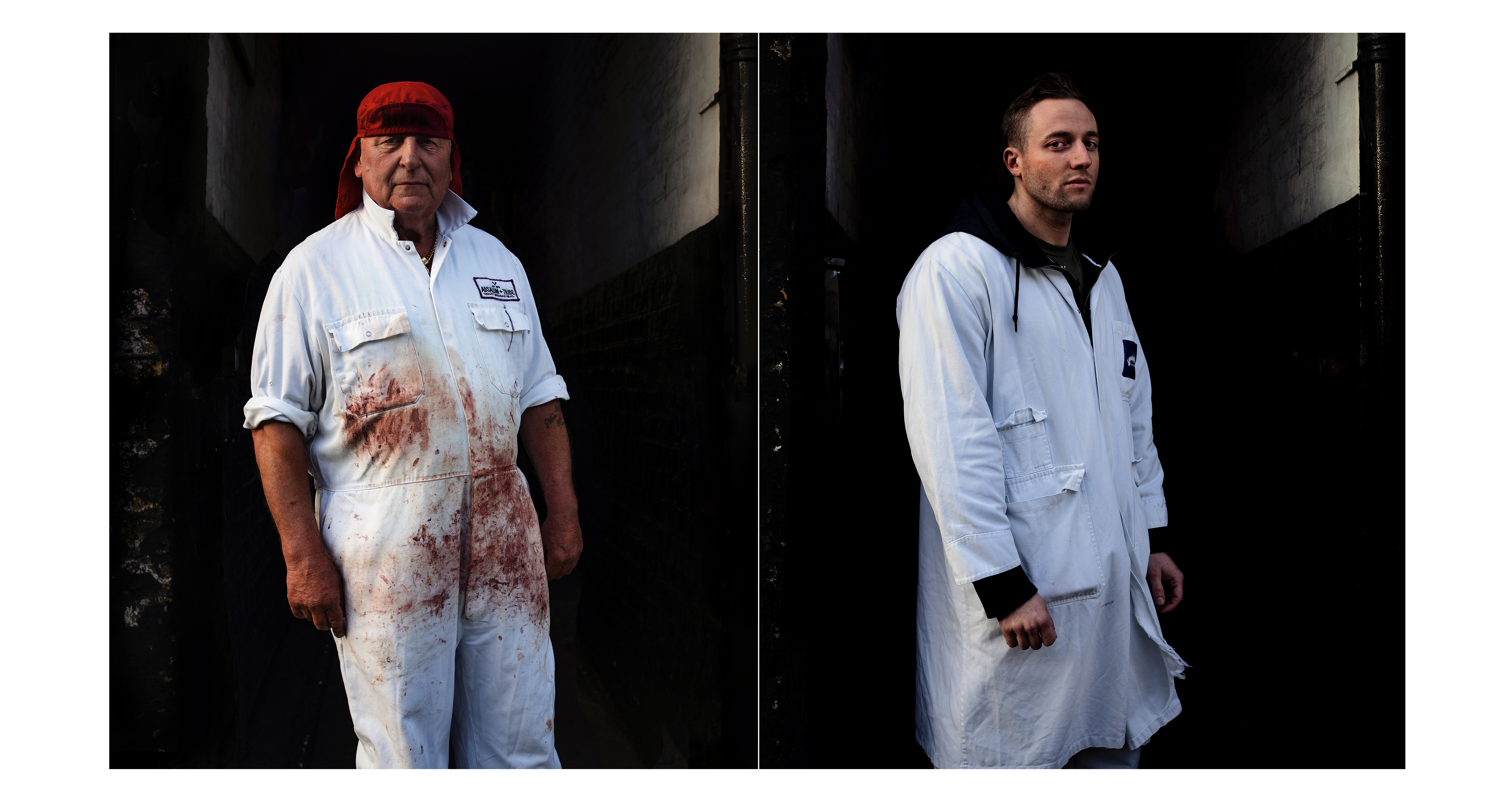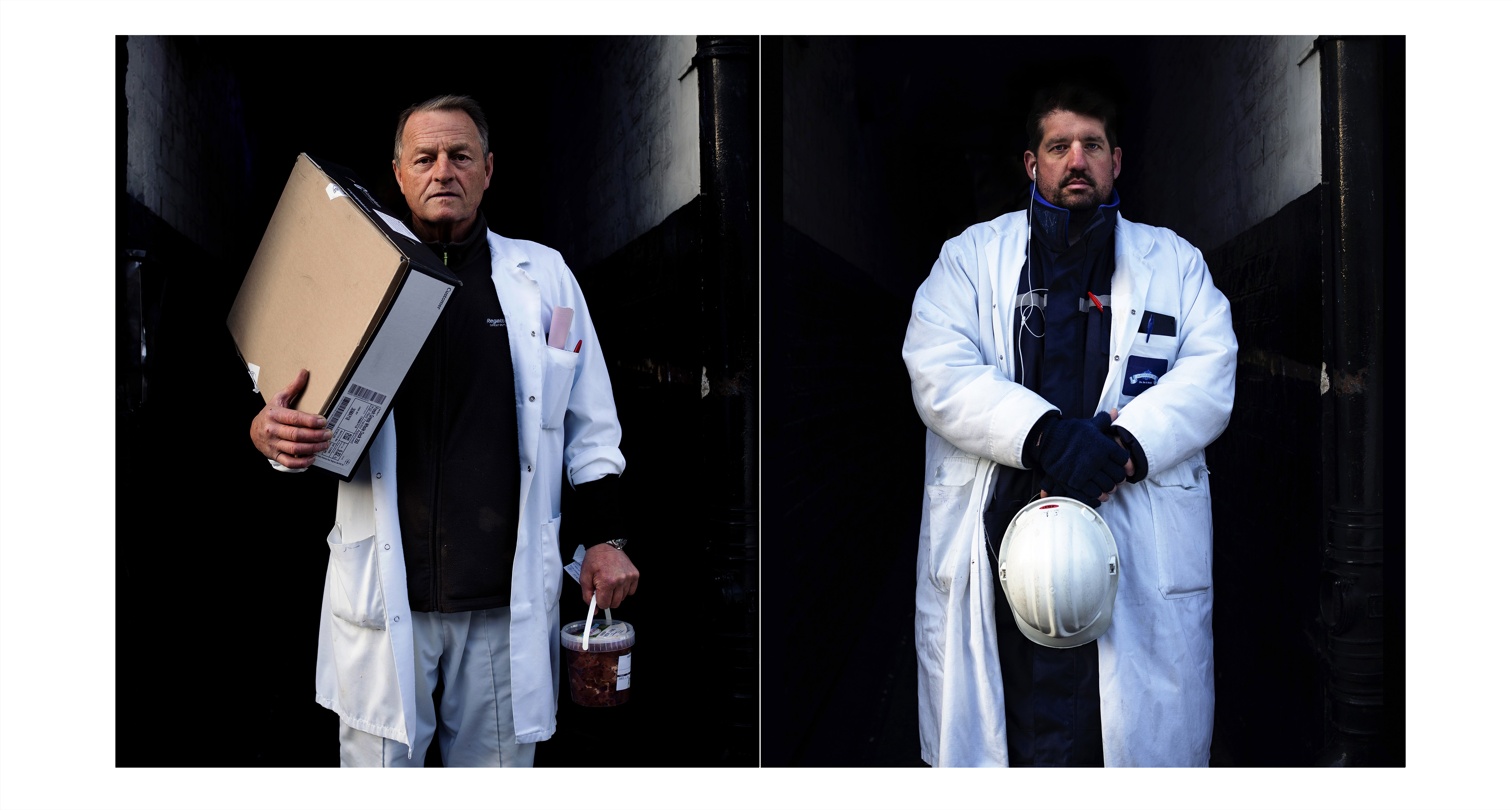











Waking at 4:30am on a freezing London morning to visit Smithfield’s Meat Market isn’t something I’d typically choose—especially as someone who doesn’t eat meat. But Smithfield’s, one of the city's oldest institutions, was intriguing. I was drawn not to the trade itself, but to the people behind it—their routines, histories, and the vanishing world they inhabit. Many of the traders are second and third generation, like Biffo, a cutter who’s worked the market for 45 years. Though times have changed, a strong sense of comradery and identity persists—rooted in the early hours, the banter, and the rhythm of manual work. I waited on Barley Mow Passage, just opposite the loading bay, as the traders arrived. I photographed each subject in quick, focused bursts—5 frames in 5 minutes—capturing a rare stillness amidst the noise and movement. Their openness, despite heckles from across the street, was striking.
Smithfield’s history is layered and complex. Once a chaotic livestock market, immortalized by Charles Dickens in Oliver Twist, it became a dead meat market in 1868, housed in a grand Victorian building by Sir Horace Jones. Though the interiors have been modernised, the past is still palpable—especially along Grand Avenue, where old market photographs line the walls. As redevelopment and Crossrail expansion threaten to move the market to London’s outskirts, this project becomes a document of a world on the edge of disappearance as London undergoes further gentrification.